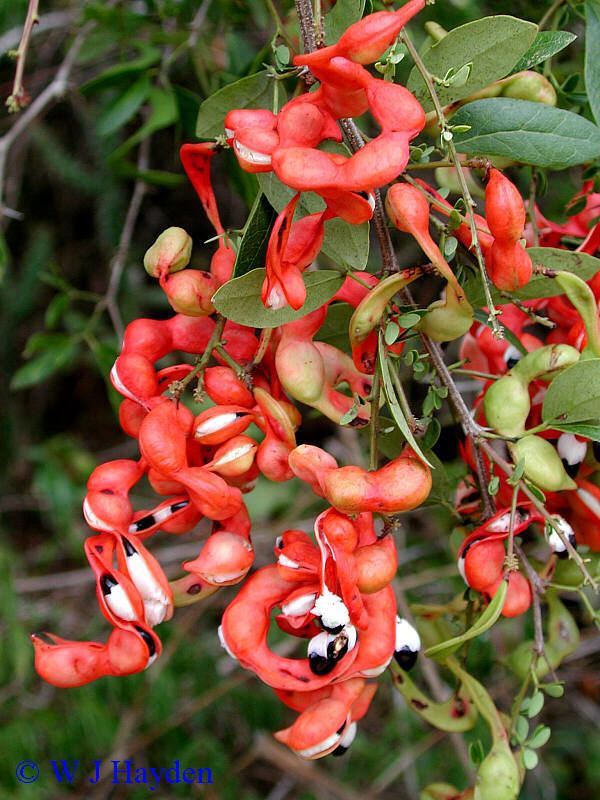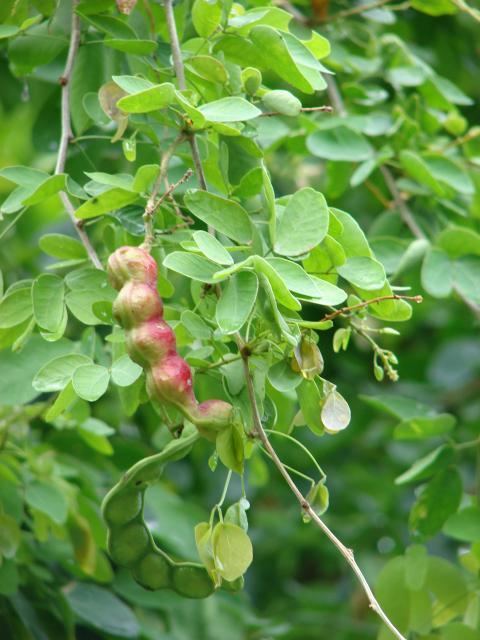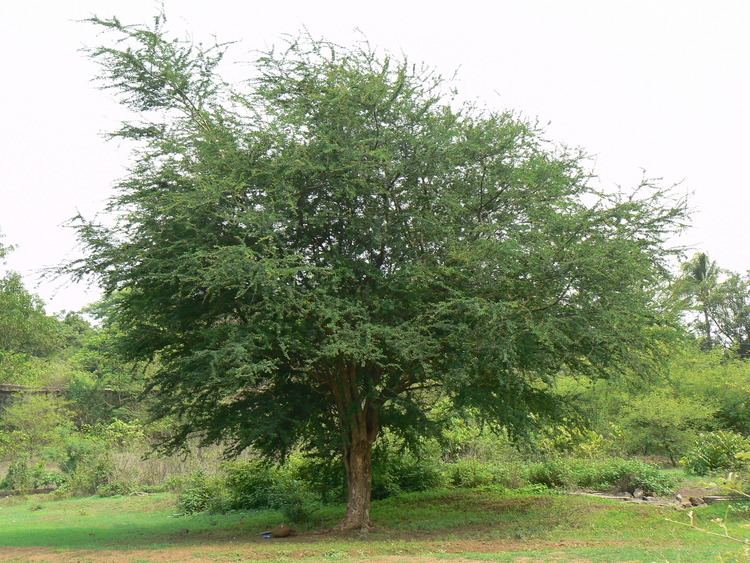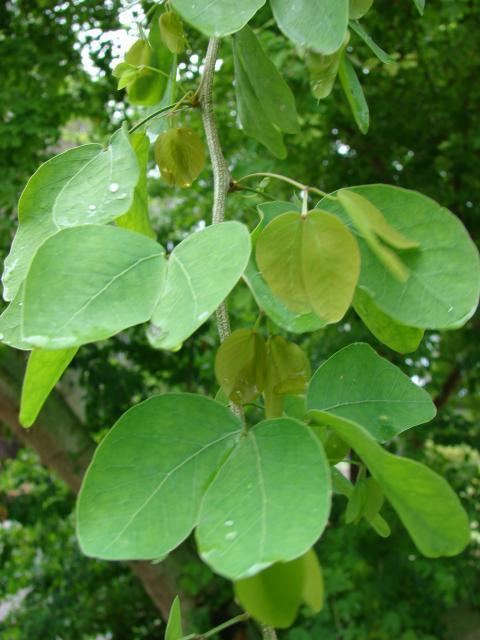Rank Species | Genus Pithecellobium Higher classification Pithecellobium | |
 | ||
Similar Pithecellobium, Legumes, Leucaena leucocephala, Mimosoideae, Albizia lebbeck | ||
Pithecellobium dulce monkeypod
Pithecellobium dulce is a species of flowering plant in the pea family, Fabaceae, that is native to the Pacific Coast and adjacent highlands of Mexico, Central America, and northern South America. It is an introduced species and extensively naturalised in the Caribbean, Florida, Guam, India, Bangladesh and the Philippines. It is considered an invasive species in Hawaii.
Contents
- Pithecellobium dulce monkeypod
- Guam chil aka pithecellobium dulce
- Description
- As food
- As medicine
- Ecology
- Synonyms
- References

Guam chil aka pithecellobium dulce
Description

Pithecellobium dulce is a tree that reaches a height of about 10 to 15 m (33 to 49 ft). Its trunk is spiny and its leaves are bipinnate. Each pinna has a single pair of ovate-oblong leaflets that are about 2 to 4 cm (0.79 to 1.57 in) long. The flowers are greenish-white, fragrant, sessile and reach about 12 cm (4.7 in) in length, though appear shorter due to coiling. The flowers produce a pod, which turns pink when ripe and opens to expose an edible pulp. The pulp contains black shiny seeds that are circular and flat.

The seed is dispersed via birds that feed on the sweet pulp. The tree is drought resistant and can survive in dry lands from sea level to an elevation of 1,500 m (4,900 ft), making it suitable for cultivation as a street tree.
As food

The seed pods contain a sweet and sour pulp that which in Mexico is eaten raw as an accompaniment to various meat dishes and used as a base for drinks with sugar and water (agua de huamúchil). The seeds are also edible and refined to extract oil, which amounts to 10% of their weight. They also contain 28% protein.
As medicine

The bark and pulp are astringent and hemostatic. The indigenous peoples of Mesoamerica use the pulp and bark against gum ailments, toothache and hemorrhages in general. A bark extract is also used against dysentery, chronic diarrhea and tuberculosis. An extract of the leaves is used for gall ailments and to prevent miscarriage. The ground seed is used to clean ulcers.
Ecology
Pithecellobium dulce is a host plant for the caterpillars of the red-bordered pixie (Melanis pixe), three-spot grass yellow (Eurema blanda) and many other moths.
Synonyms
Depending on the region of its occurrence pithecellobium is known by different names. In its native Mexico, the tree is known as huamuche, guamuche / huamúchil/ guamúchil / cuamúchil / deriving from its Nahuatl name cuauhmochitl. In the wider region it is also called "pinzán"', or 'guamá americano (Puerto Rico).
It is called "seema chintakaya" (సీమ చింతకాయ) in Telugu. Monkeypod is as English name, but is also used for several other plants, including Albizia saman. Other names include blackbead, sweet Inga, ផ្លែអំពិលទឹក (Plaeh umpel tek) (Khmer), Makham thet (Thai: มะขามเทศ), ʻopiuma (Hawaiian), kamunsil (Hiligaynon), damortis or kamantiris (Ilokano), kamachile (Tagalog), கொர்கலிக்காய்/ கோணக்காய்/ கோன புளியங்கா/ கொடுக்காப்புளி kodukkappuli (Tamil), ದೊರ ಹುಣಸೆ/ಸೀಮೆ ಹುಣಸೆ/ಇಲಾಚಿ ಕಾಯಿ/ಇಲಾಚ್-ಹುಂಚಿ ಕಾಯಿ dora hunase or seeme hunase or ilaichi kai or ilach-hunchi kai (Kannada), વિલાયતી આંબલી i.e. Foreign tamarind - "બખાઇ આમ્બલી" i.e. "Bakhai Ambli" Gujarati), जलेबी i.e. jalebi like or गंगा इमली i.e. Ganges Tamarind (Hindi), জিলাপি i.e. Jilapi meaning Jalebi (Bengali), seeme hunase (Kannada), चिंच बुलाई or विलायती चिंच i.e. Foreign Tamarind (Marathi), చింత chinta (Telugu). and "Achhi gidamiri" [Sindhi]. In odisha it is called Seema Kaiyan(Odia).
In India it goes by the name "Madras thorn", although it is not native to Madras. The name "Manila tamarind" is also misleading, since it is neither closely related to tamarind, nor native to Manila.
In Kuwait it has the same name as in India but in Arabic "Showkat Madras". Showkat meaning "thorn" and that would mean Madras Thorn. It appears to have been introduced in Kuwait in the 60's or 70's and maybe introduced by Indians. One can still see the remains of the tree or living trees in the public parks established during the 60's up until the 1980's in Kuwait City. The tree is rarely sold in commercial nurseries but the old gardeners seem to know it.
This plant is known under numerous junior synonyms:
